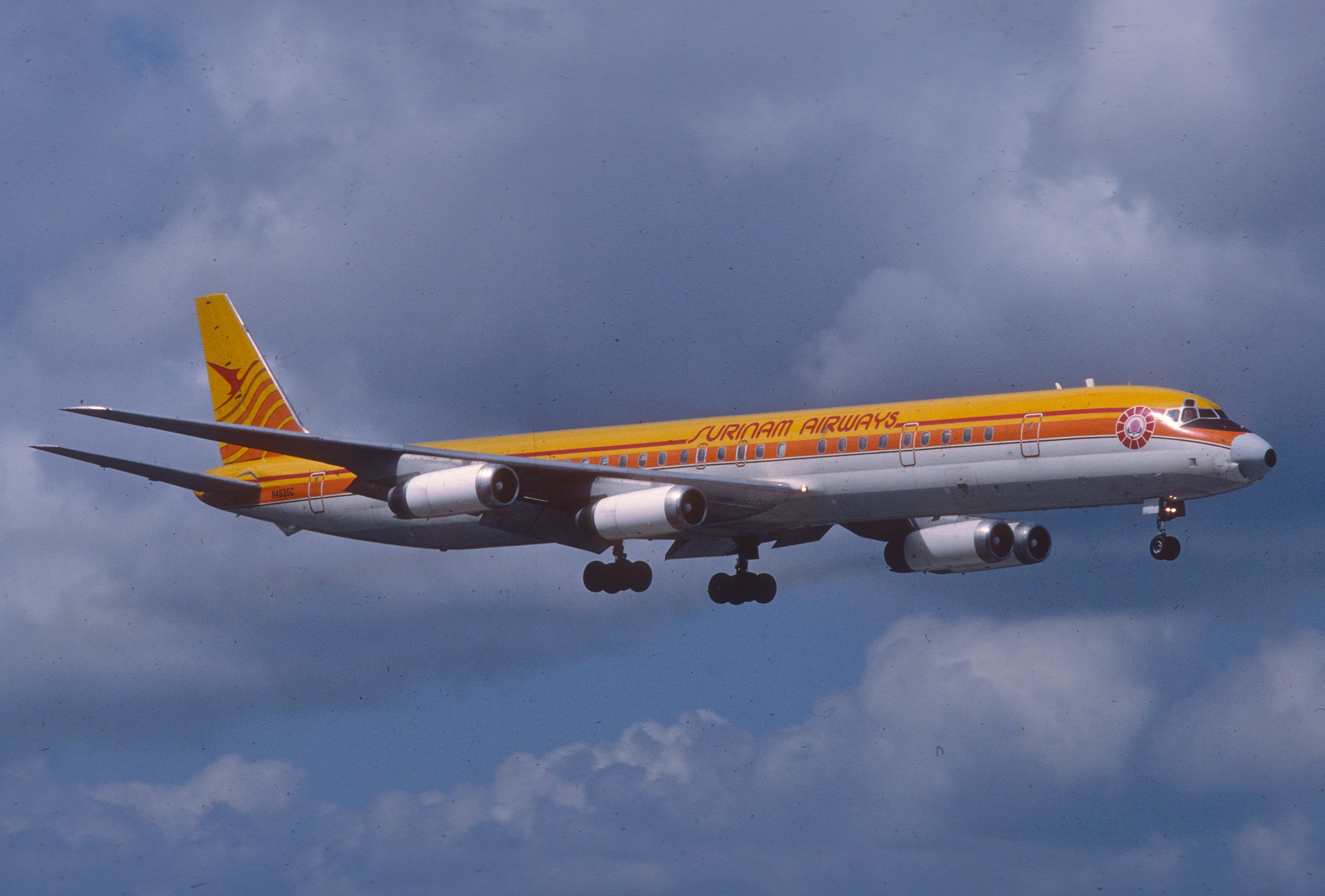Surinam Airways Flight 764 might be familiar to many in the country as the worst aviation disaster in its history, killing 178 out of 187 onboard. Investigation reports revealed how a string of wrong decisions by the pilots and oversights by the carrier caused the crash, leading to serious action against the airline.
The crash
Flight 764 was a regular service from Amsterdam to Paramaribo, flown by a McDonnell Douglas DC-8 at the time (registered N1809E). On 7th June 1989, the Surinam Airways aircraft took off from Schiphol Airport as normal at 23:25 local time, with two pilots (Captain Wilbert Rogers, 66, and First Officer Glyn Tobias, 34) and a flight engineer. These ages will become very relevant further into the investigation.
The journey itself was smooth, with the pilots expecting clear visibility on the approach to Paramaribo. However, weather reports closer to the destination indicated dense fog, cloudy skies, and visibility of only 900 meters (down from six kilometers). This caught the pilots by surprise, but they did not follow instructions to switch from an ILS approach to a VOR/DME one.
While the First Officer raised doubts over the ILS system, which was known to be unreliable in such conditions at the airport, the Captain pushed on with the approach. While the VOR/DME system was also switched on, the pilots did not use it for the final approach.
During the landing, the aircraft descended too low and the right engine struck a tree 82 feet high, with the wing hitting another tree and instantly causing the plane to invert and crash. All but nine passengers survived, with all crew members and others perishing in the crash. Even those who survived faced serious injuries after the deadly crash.
The investigation
The catastrophic crash quickly turned into an investigation to understand how the DC-8 ended up crashing so close to the airport. The Surinam government's commission found two probable causes for the crash, one being the "captain's glaring carelessness and recklessness the aircraft was flown below the published minimum altitudes during the approach and consequently collided with a tree" and the other being Surinam Airways' failure to follow the rules regarding qualifications for its pilots.
The crash was directly caused by the Captain's decision not to use the VOR/DME system despite knowing that the ILS system was unreliable. This may have been driven by the low fuel on the DC-8, but it remains unknown the exact motivations for not following the right procedure.
The second reason was Surinam Airways' failure to retire the Captain at the mandatory age of 60, as needed by law. A series of paperwork issues and lack of oversight meant that not only was Rogers flying at 66 but also did not complete his last check on the DC-8 itself. To make matters, the First Officer reportedly used false identity papers and may not have had certification for the DC-8 either.
The US' NTSB closely followed the investigation since the plane was registered in the country and Surinam Airways flew to the US at the time. This led to a series of requirements to report pilots birth dates and details to ensure no one over 60 was flying into the country. To date, Flight 764 is Surinam's worst aviation crash.


.jpeg)